When I started taking these photographs of people in my town, a friend said to me that any photo says as much about the photographer as it does about the person being photographed. I think they might have been quoting someone famous, I’m not sure, but anyway, at the time I didn’t see that in any photos I’d taken. Looking at the pictures in hindsight now, though, I sort of do. It makes me realise that the reasons I’m drawn to the people I photograph probably do say something about me and how I ended up here in Hornsea.
Hornsea is on the Yorkshire coast, but I grew up inland, in a little market town about 12 miles from here. Eighteen years ago, I had my first child, a beautiful girl we called Rose.
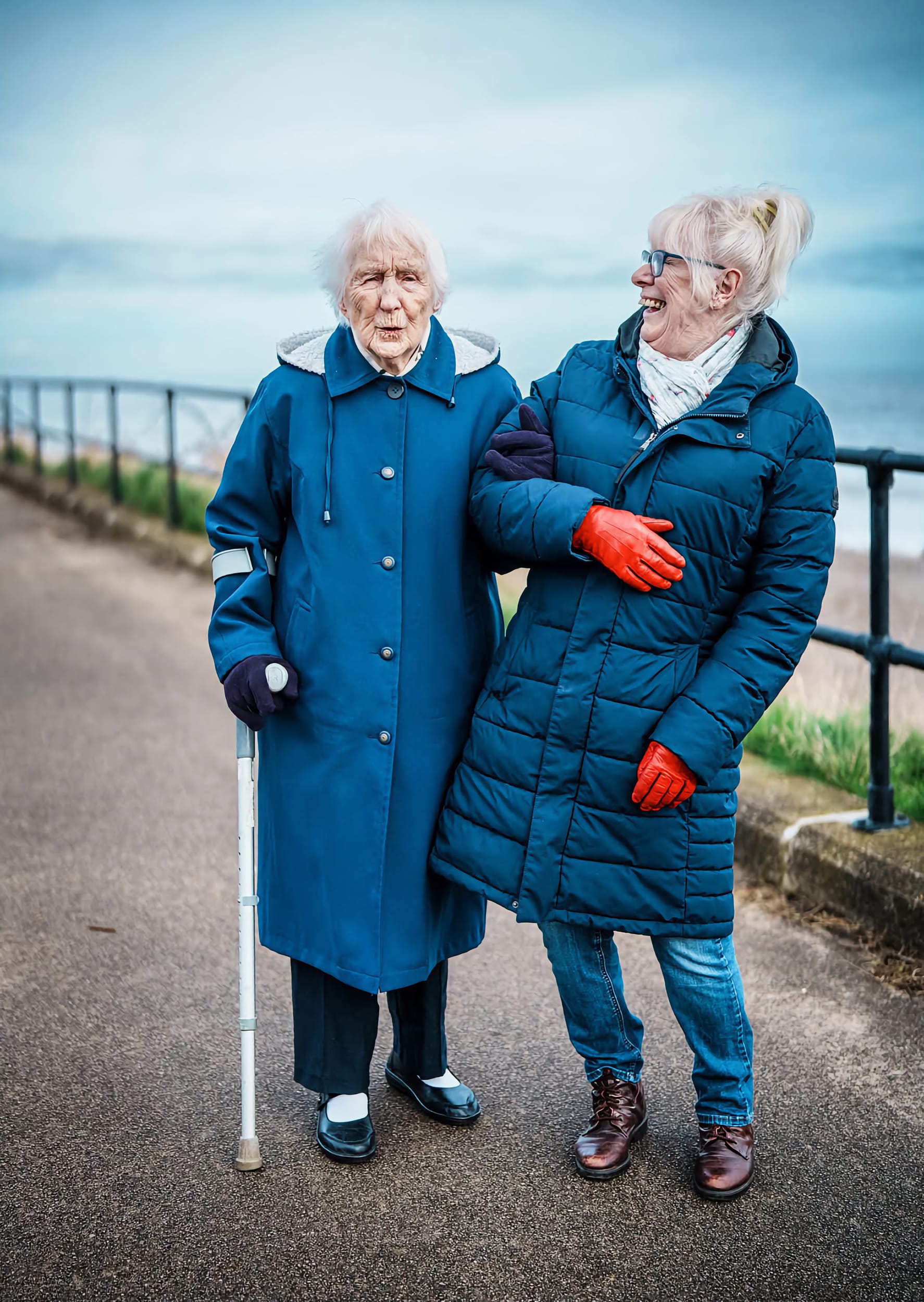
I thought everything was fine at first, and I had a very happy six months with her – some of the happiest months of my life. Gradually, however, I realised Rose wasn’t doing what other children her age were doing. We were referred to see a hospital paediatrician, who did a lot of tests and mentioned “developmental delay”. After that, Rose’s lack of development became more pronounced in contrast to other children, and I felt very isolated. Rose’s dad coped with it better than I did, really. He was certainly more noble: he loved her as she was, and would say, “She’s just Rose.” Of course I loved her too, as I love her now, and always will, but I couldn’t stop myself wondering how life might have been for her. I don’t know if that’s wrong of me, but there it is. It is unjustly hard on him for me to say it, but Rose’s dad’s ability to cope left me feeling a bit alone.
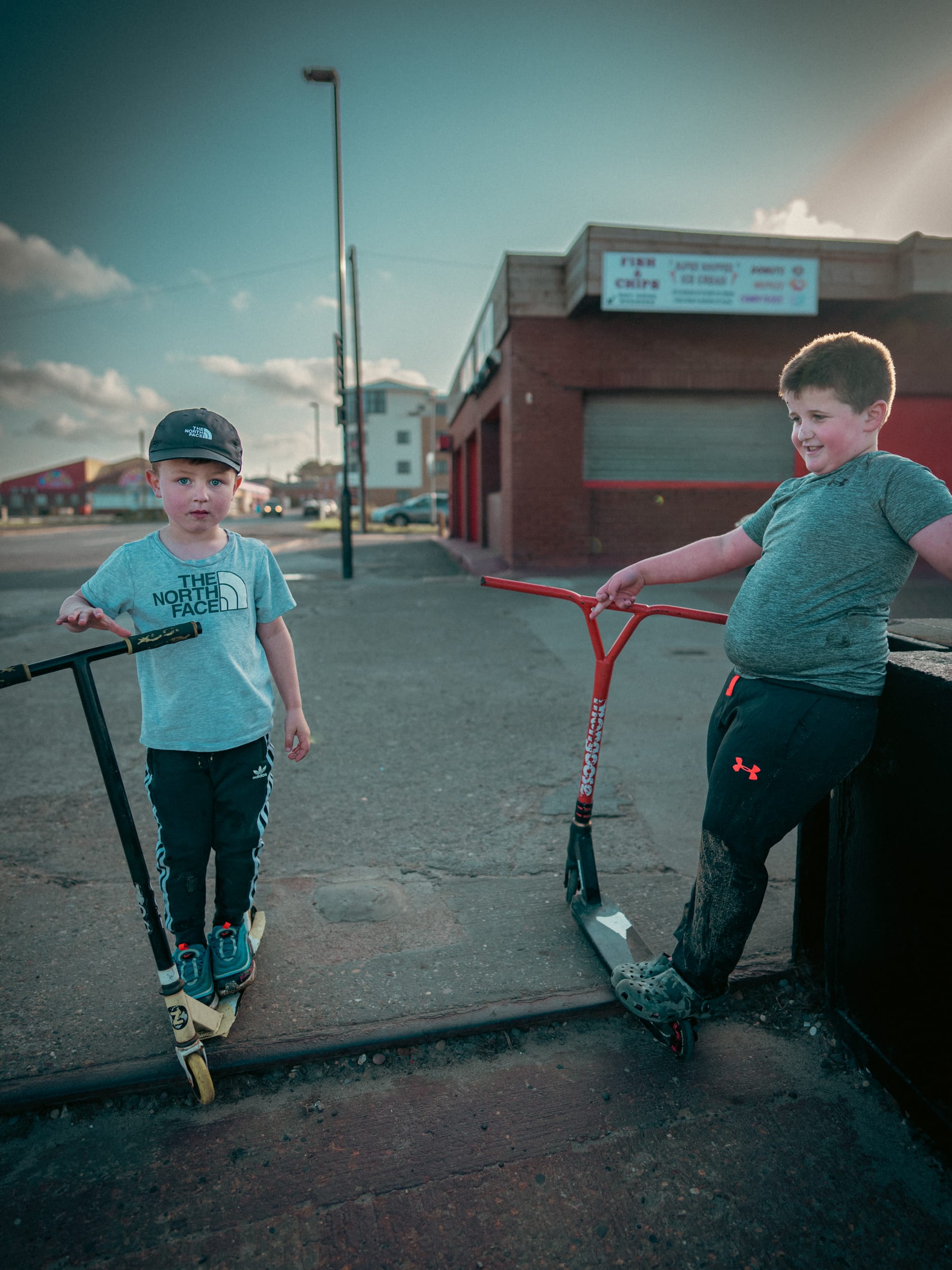
It was complicated, it was painful, and it became hard to be around people I knew, especially people with young children. I didn’t want people feeling sorry for me or feeling awkward, which people naturally did, and it all made me want to run away from my old life. We moved to Hornsea, a place I barely knew, because no one knew me or my baby, and because I thought Rose would enjoy the beach – she loves sensory things like sand. It could have been any faded, end-of-the-line northern seaside town really, but it felt good breathing in the sea air and having nobody notice me. Unfortunately, things didn’t go smoothly, because I had a couple of miscarriages, which were more sorrow piled on at a time that was already heavy with it. In the end, we did have a son, Ed, but then my partner and I split up (although we stayed friends). After that, I kept myself to myself, and just got on with life on my own with my children.
Then came Covid-19. In lockdown, I bought a secondhand camera because I thought I’d have the time to learn to use it, and I could try make a record of Hornsea during this period. Rose’s dad started having her at weekends, and by now Ed was old enough to be left if I went out for a walk, so it was the first time since having Rose that I could do anything by myself.
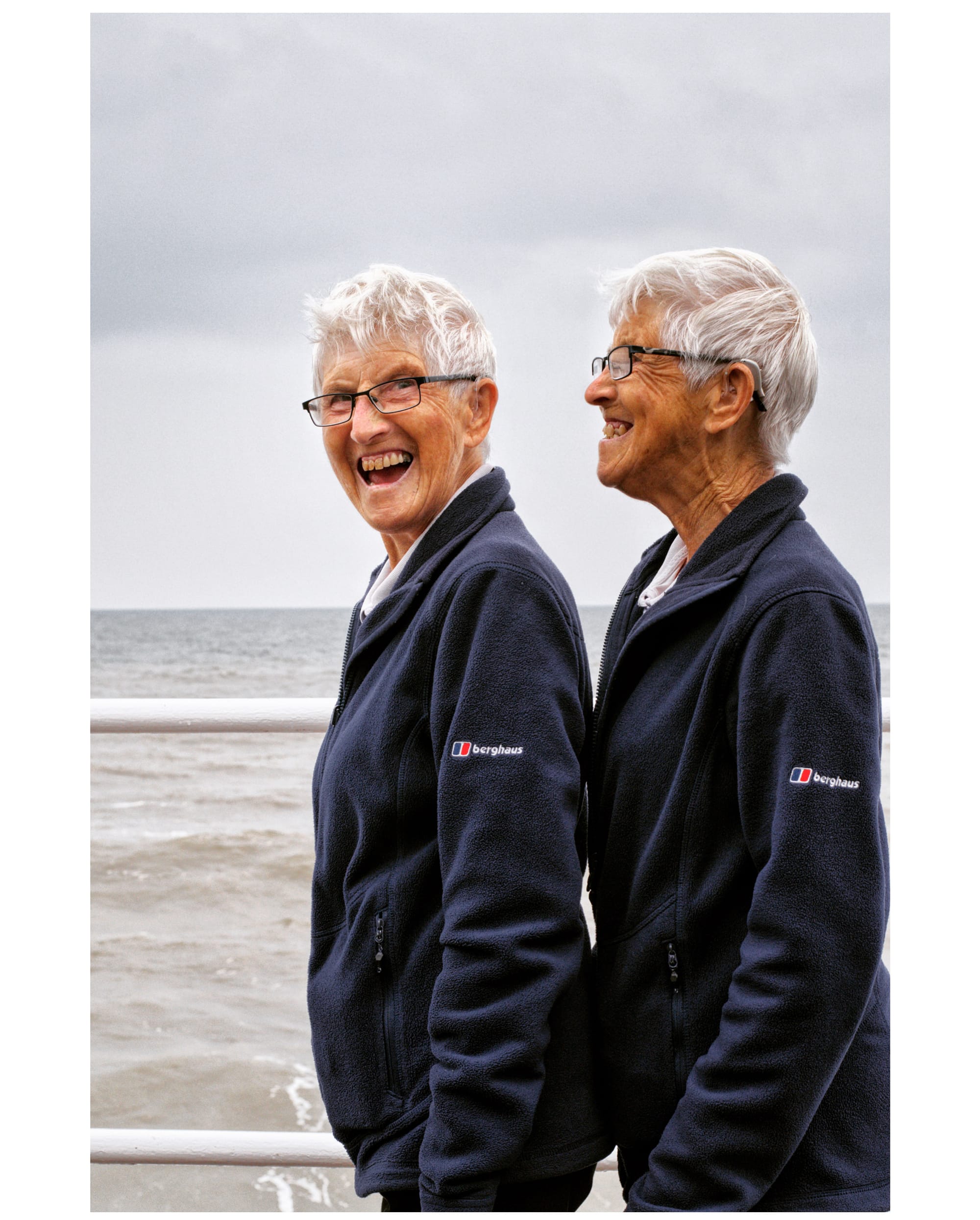
I joined a couple of online photography groups – they used to set indoor challenges like “take a still life picture” – and I took pictures of Rose and the dog to learn how to use the camera. After a few weeks, I braved the Hornsea Photography Club. Initially I found it intimidating because most of the members were older men, but they gave me a lot of encouragement. We did have chats about the laws of photography and whether I was breaking them (I love a lot of negative space! I like to see people walking into or out of frame!) but it all helped. I did realise I wanted to do street photos, though, not the sunsets and garden birds that a lot of them prefer.
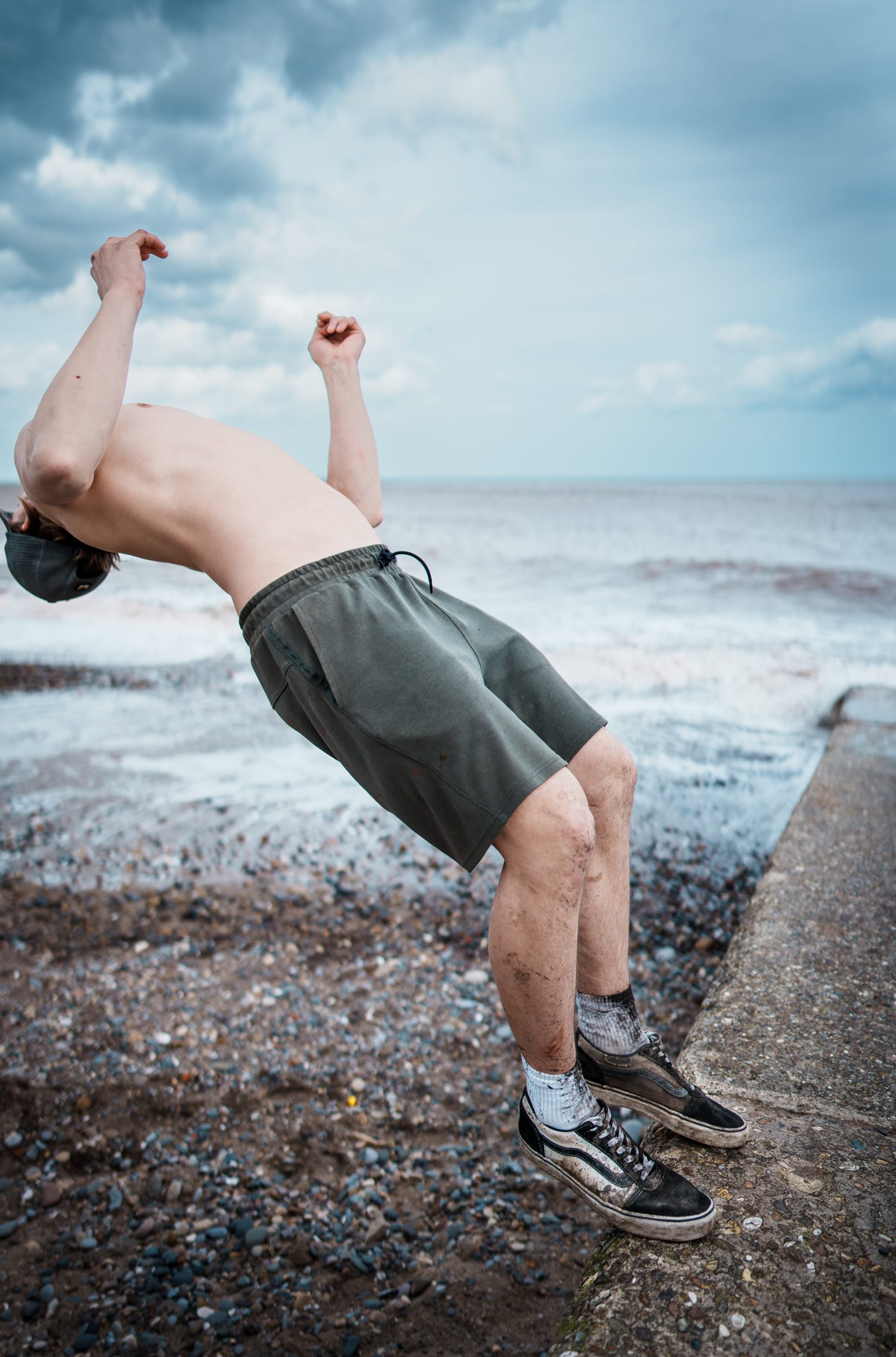
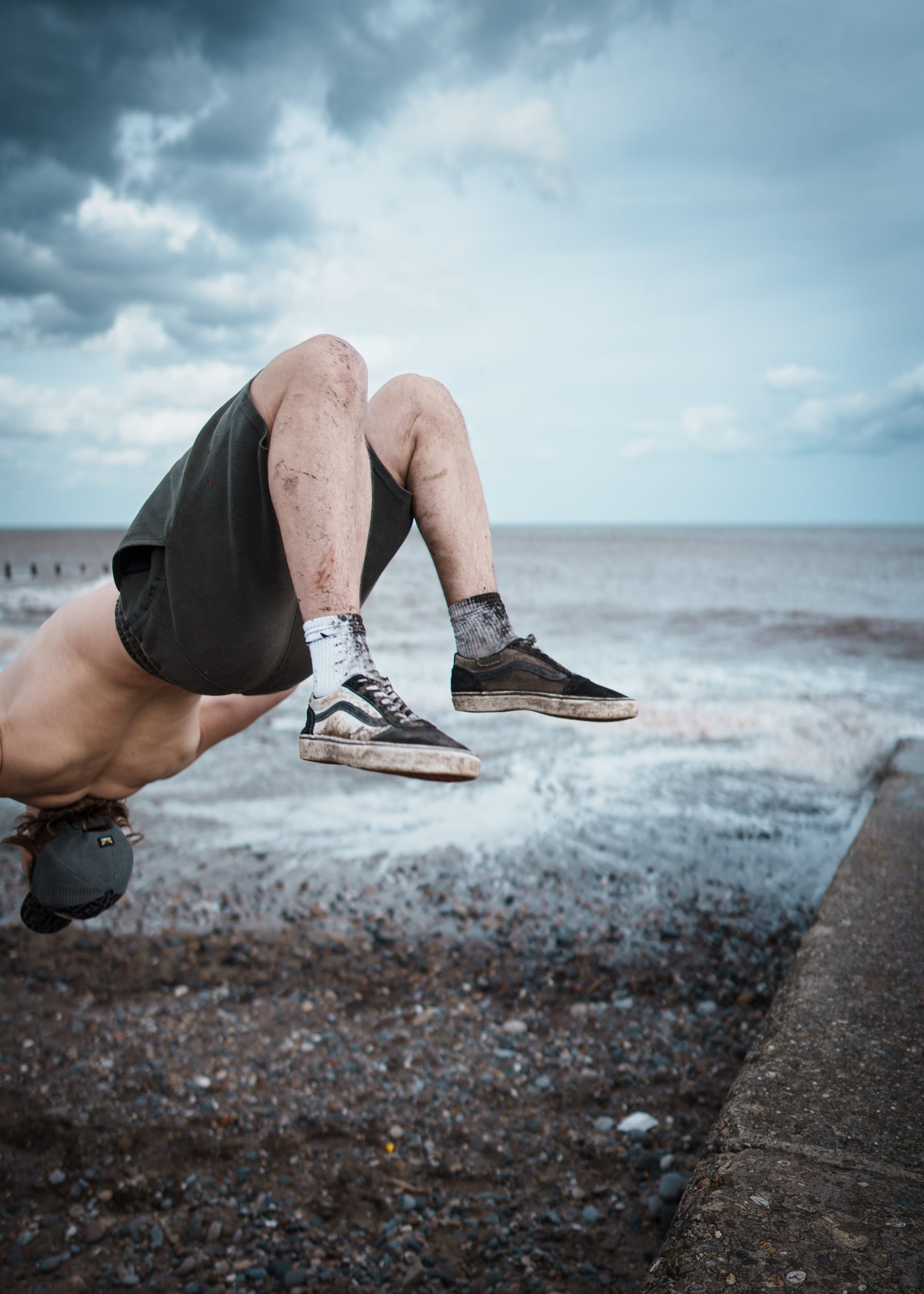
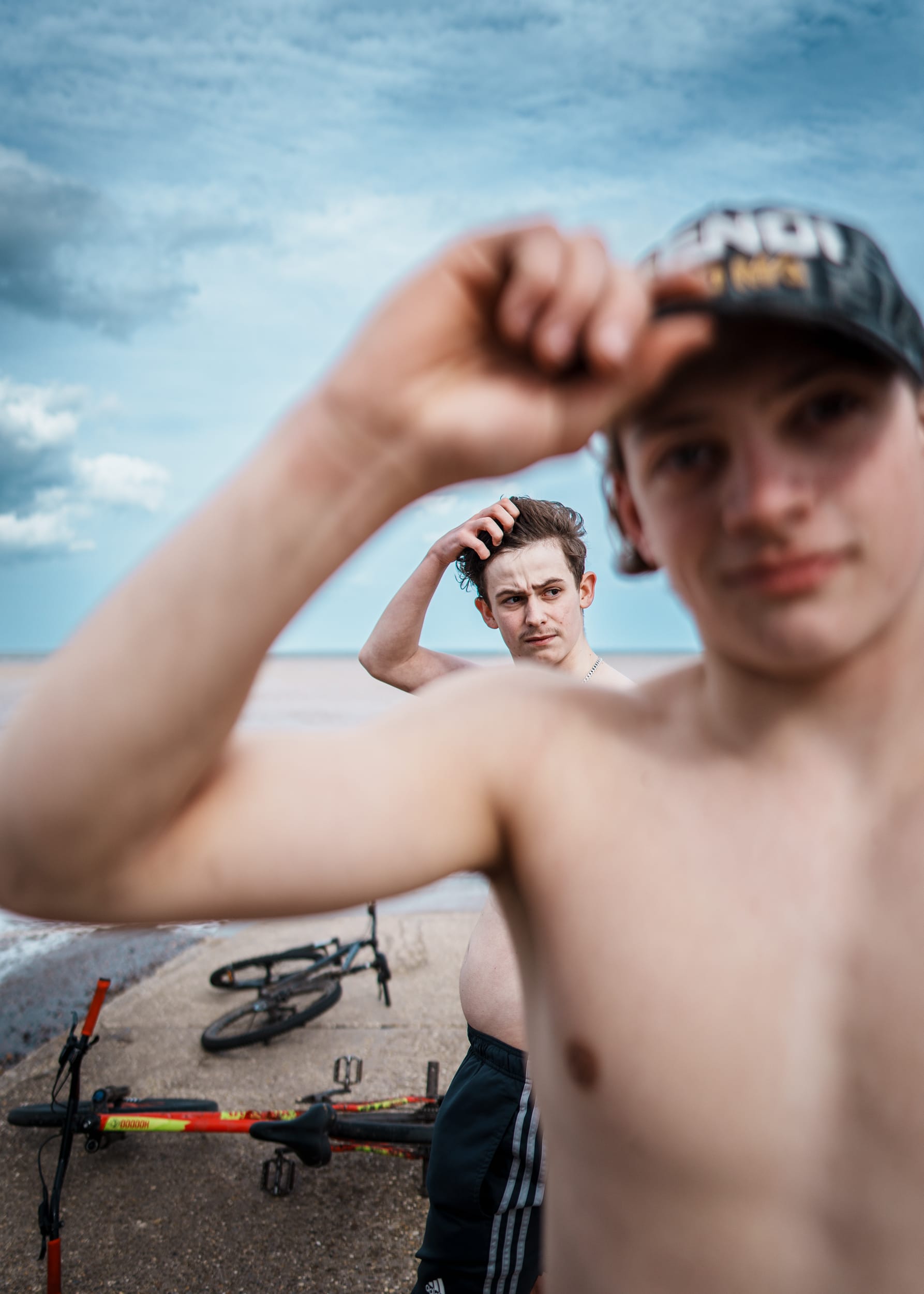
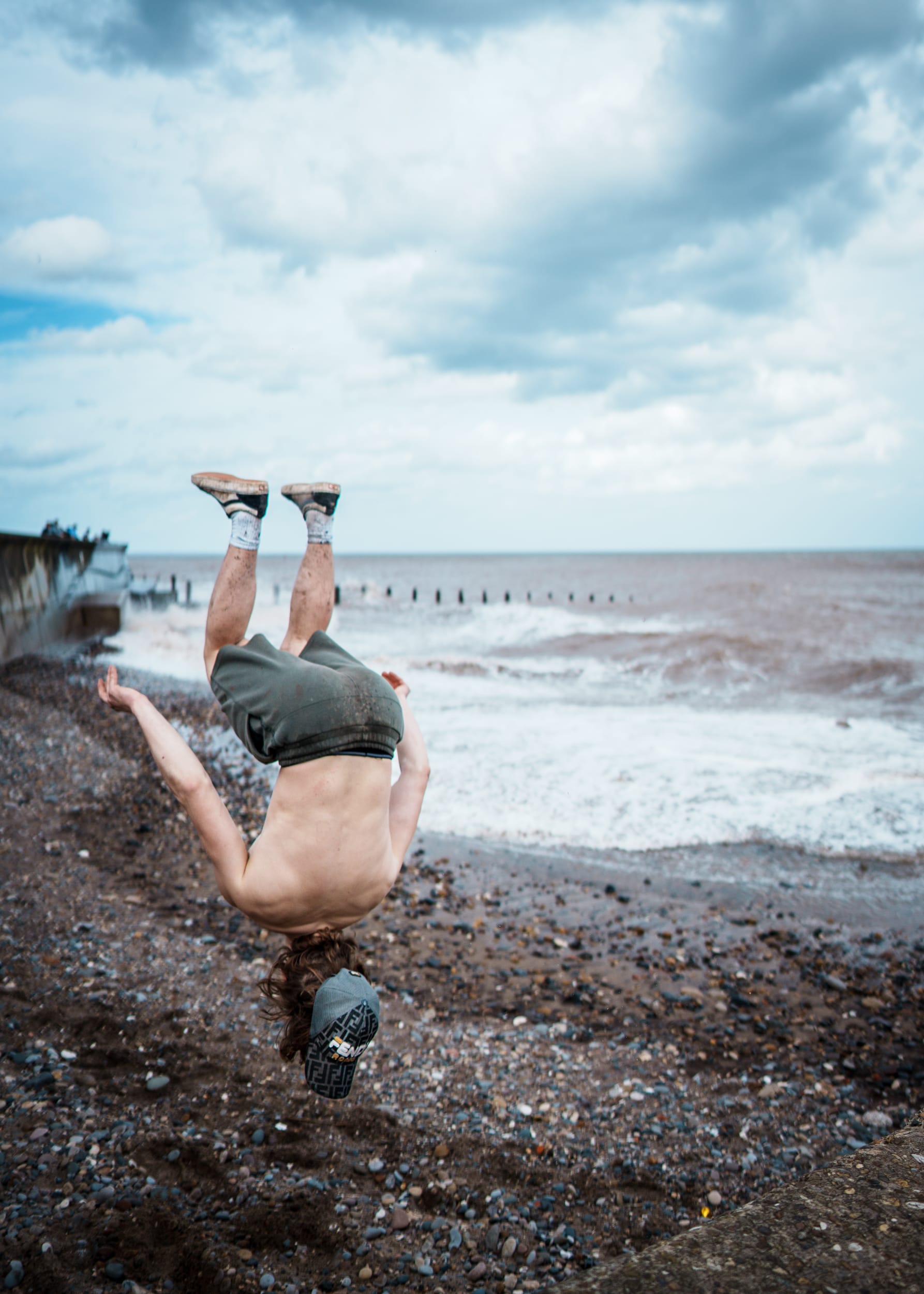
These two boys came over from Hull one summer day, and were really keen for me to take pictures of them. One of them could backflip, the other one just threw stones in the sea – but I took some pics anyway and sent him them. They’d cycled over on the railway line and were just full of energy and life. Just as I was about to go, I took the picture of them with their arms up – and it’s one of my favourite shots. Not much of a story there, but one of those serendipitous moments that only seem to happen when I have my camera with me.
I started taking pictures of people’s backs as they looked out to sea. Something about them just looking moved me, and also I could take the picture without asking or having to talk. I liked those backs, but then someone said it was lazy photography, and I thought I should try to get close up and in front of people.
I began taking candid, spur-of-the-moment shots, just smiling and then walking away, but then one day after taking a picture of a woman outside a café, I stopped and showed her the raw picture on the display on the back of my camera. She didn’t mind, but she didn’t see why I thought it was a good picture – generally people don’t. So I offered to send her the picture later, which she liked. It felt good being able to give her something. After that, I started asking more people if I could take a portrait of them, and almost everyone agreed. (I think the fact that I’m an ordinary, unassuming middle-aged woman means they trust me. Also, this was still in lockdown, when people craved connection.) The camera allowed me to make those connections and to continue to do that. And I really enjoyed it, because it was really lovely to chat to people about their lives. Everybody has something to tell you.
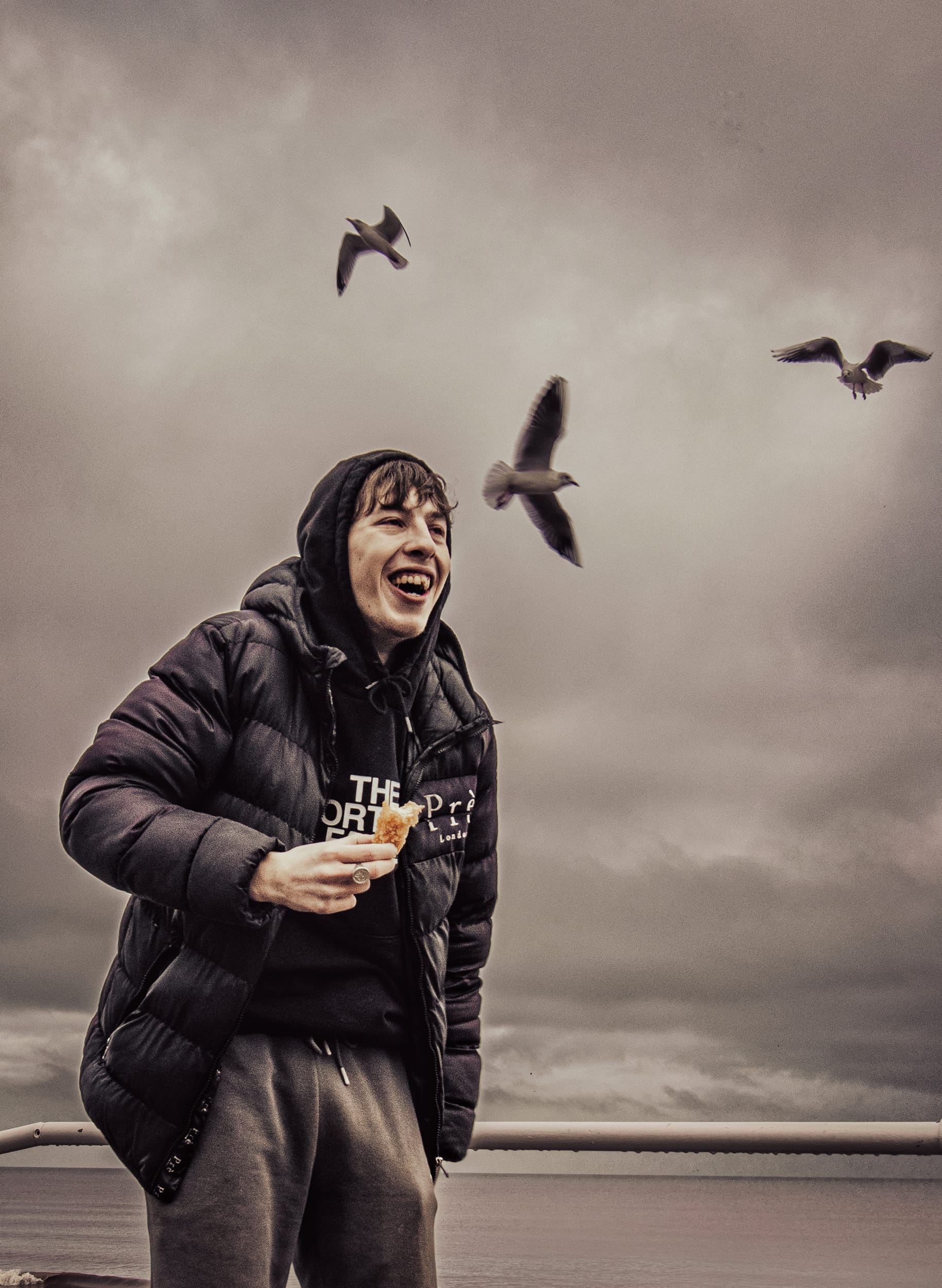
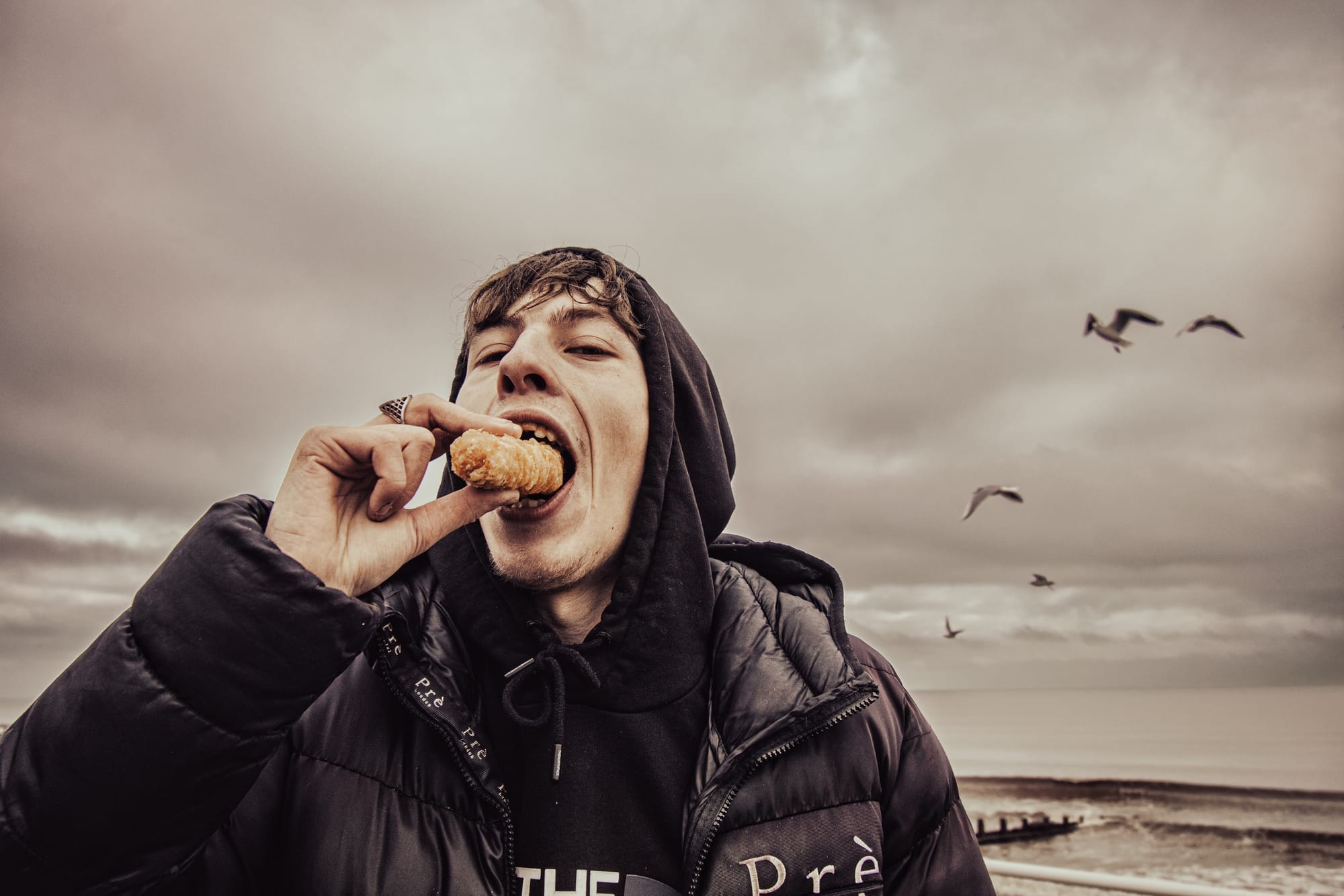
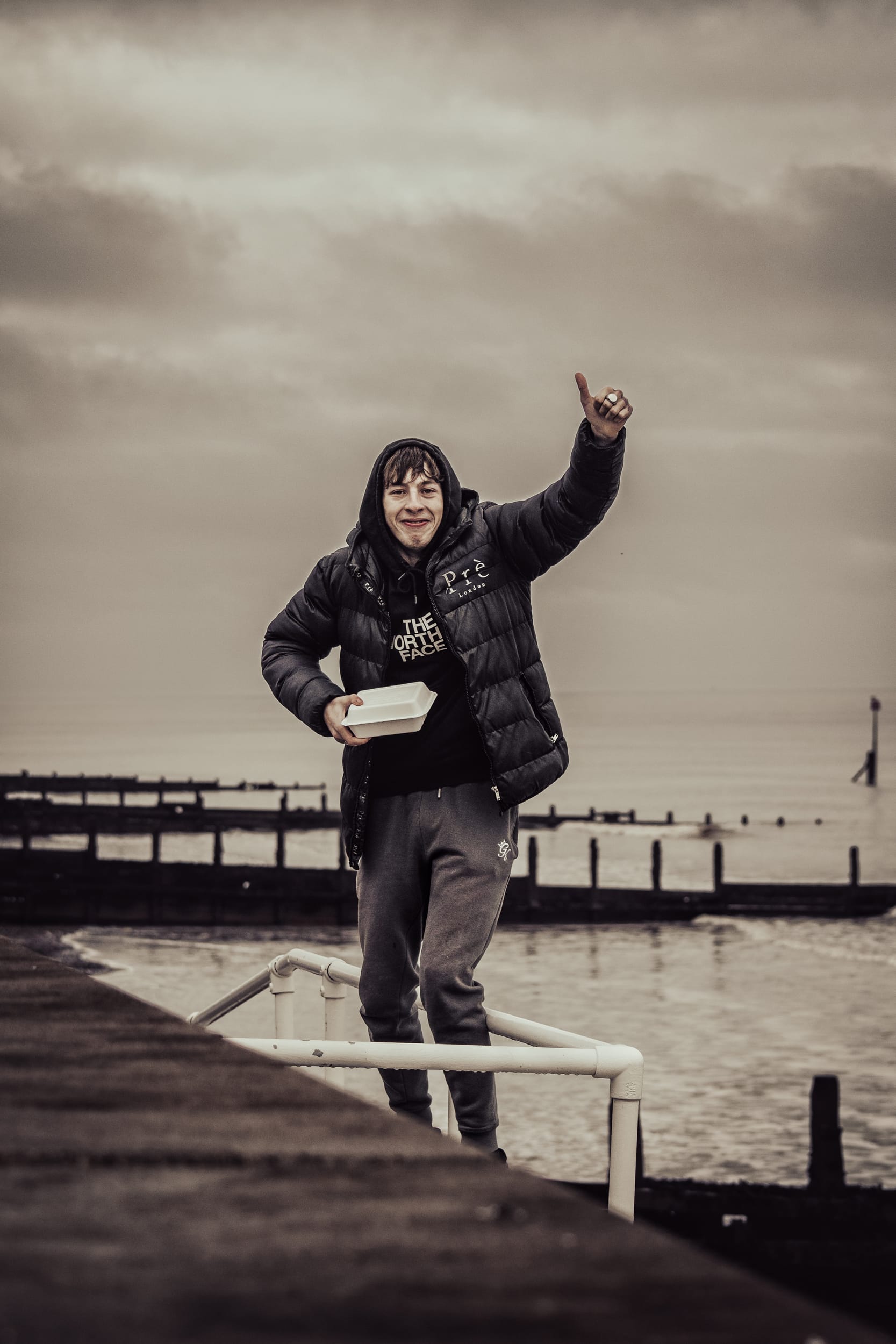
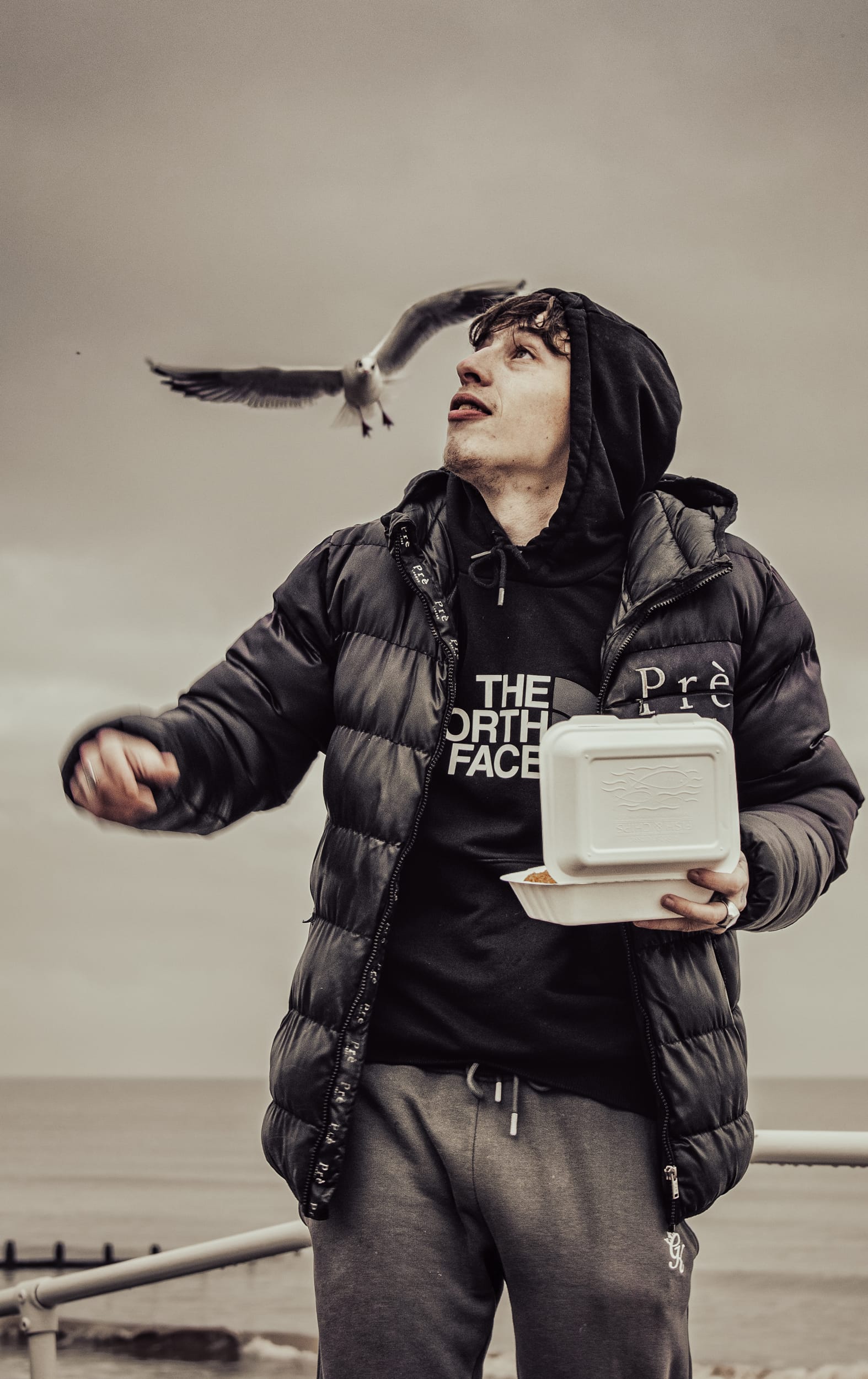
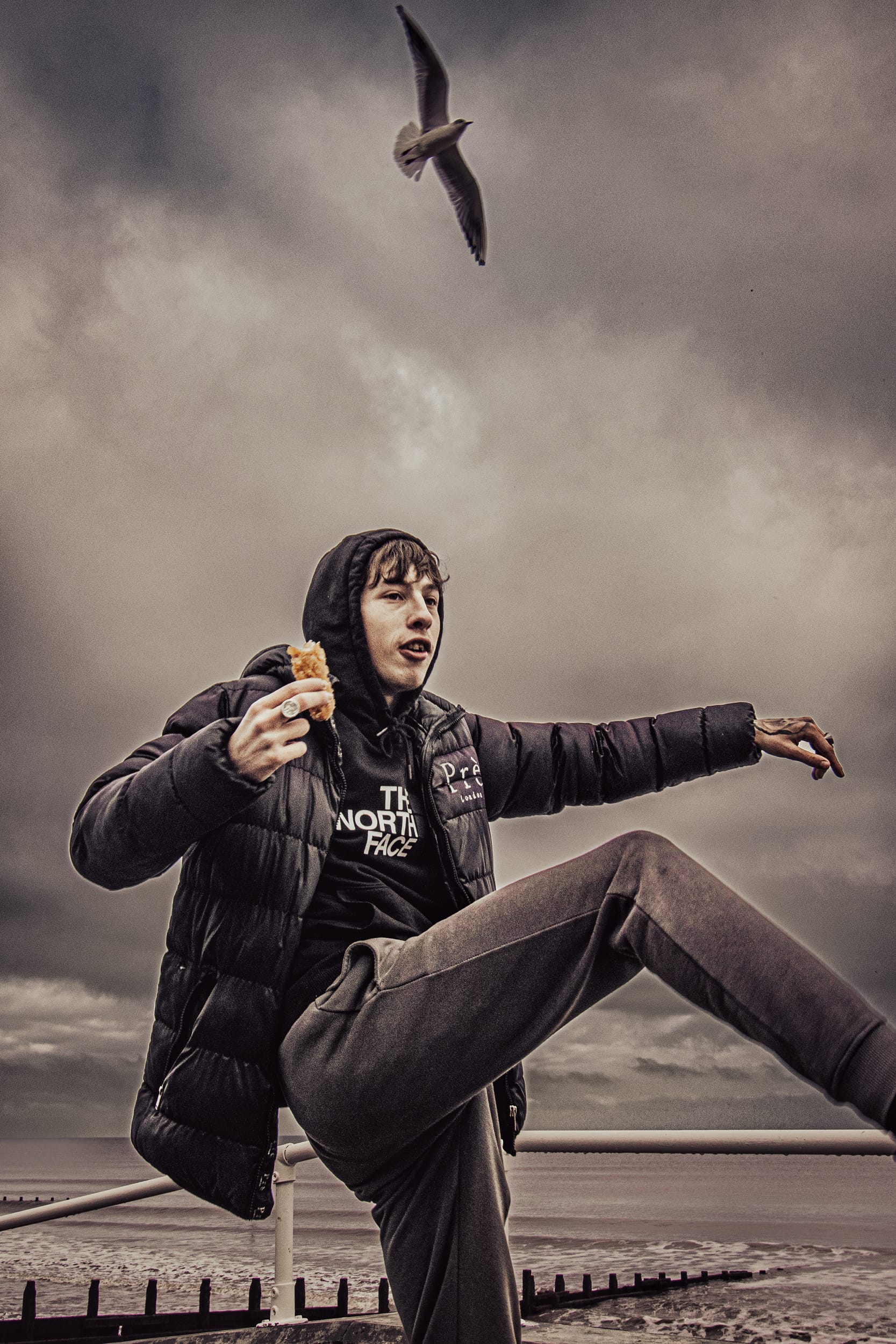
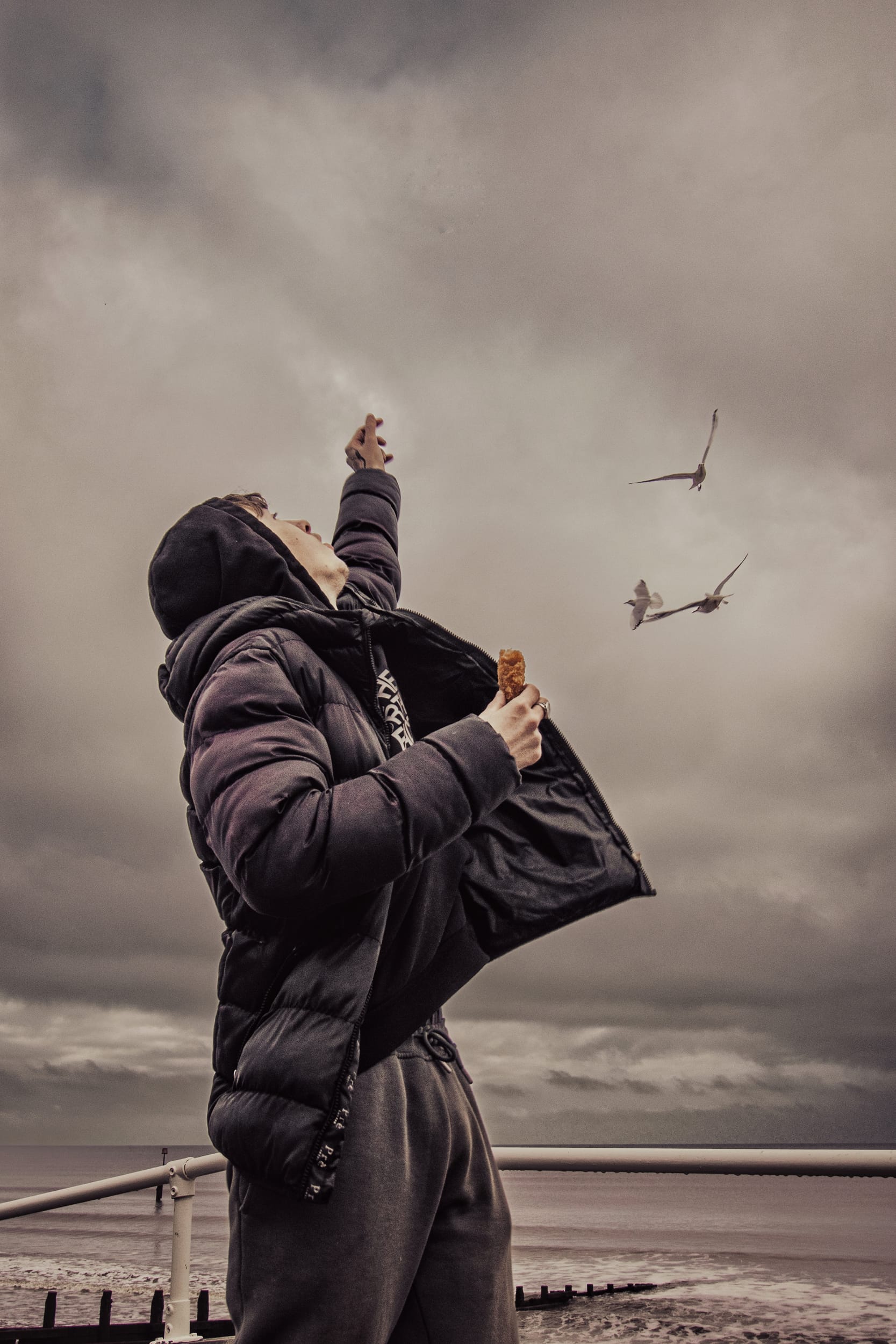
Another set I took when I first started. His name is Declan – again he’d cycled over from Hull with mates just for the day and he was in a holiday mood. He loved playing up for the camera and was really enjoying himself. I remember when I left he said it was the best day he’d ever had.
What I came to understand, talking to people, is that in a seaside town, most people have come to escape something. I know people escape to all kinds of places, but the sea and a seaside town, however run down, represent something distinct – even if it’s just peace after people come here to retire after stopping work. We get a lot of transient people just holing up here for a while until something passes, and they move on to another place. Other people come because of the anonymity you get in places where people go for breaks and holidays. That anonymity makes people feel carefree.
I’m not entirely sure what people feel they’re escaping to, but maybe it’s something to do with a perceived sense of safety remembered from their childhood. A lot of people tell me they’ve ended up here because their parents loved it, and they came on holiday as a family, out of Hull and the industrial West Riding. All the benches with memorial plaques testify to that. I see a lot of elderly people holding hands, something I’ve not noticed so much elsewhere, and I like to think they’ve found contentment here after lives lived.
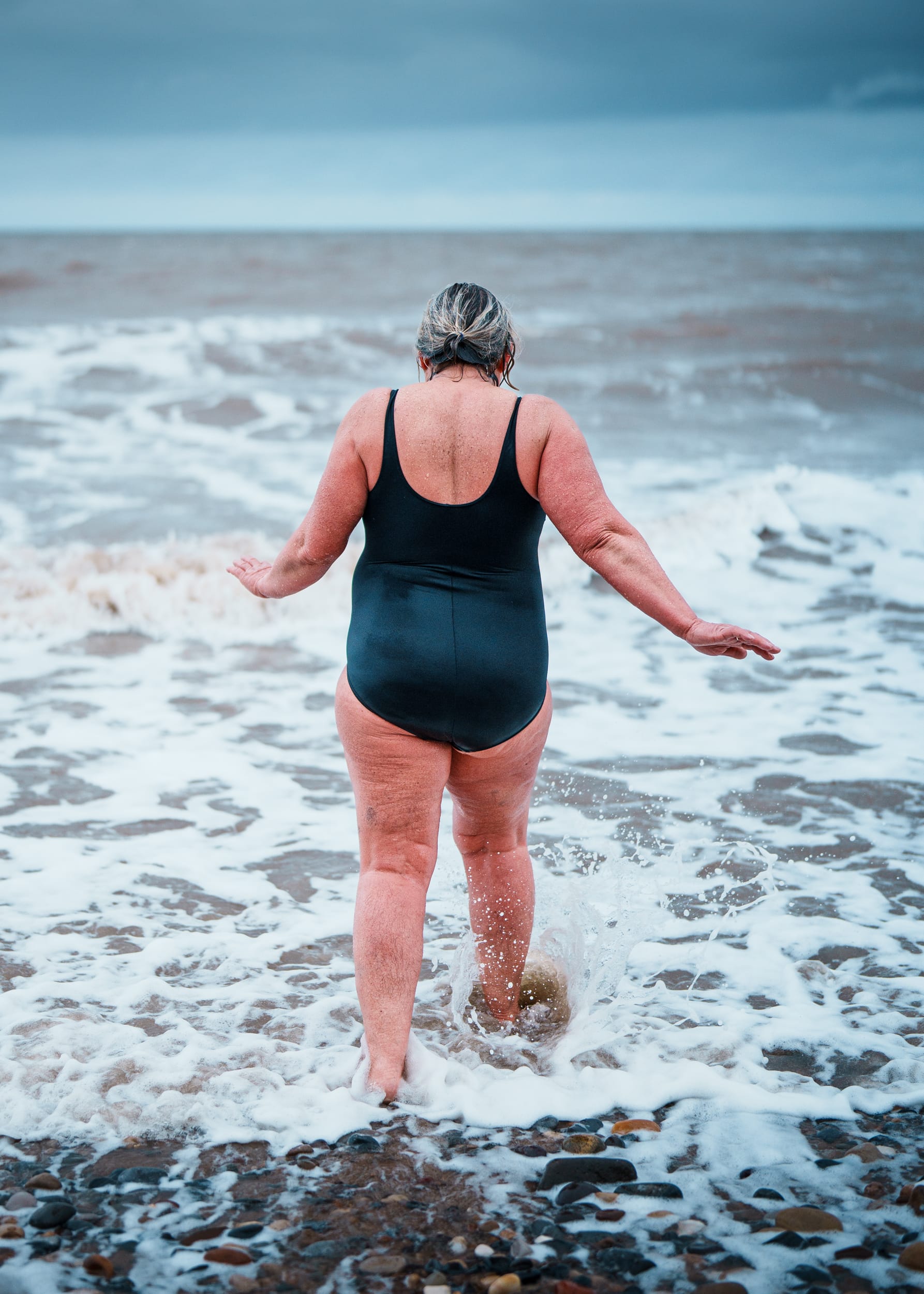
I suppose I’m sensitive to the escape urge, because that’s what brought me here, too. It sounds a bit clichéd, but walking by the sea everyday, and the rhythms of the sea, soothed me a bit at a time when I needed soothing.
The photography itself was a kind of escape for me, because it was a way of creating order out of chaos. Having a disabled child means that you are totally out of control; in fact other people, bodies of people, agencies, come in and try to take control for you. I really didn't like that. I needed help, but I didn't want it. I suppose I didn't want to have to need it.
When I take pictures, I find everything slows down. I'm totally absorbed in the moment and getting the picture I think I can get. I do have an idea of how I want them to look, and this is where the issue of exploitation can come in, but I think talking to people and understanding them counters that. People have to trust you, though,, and that's where empathy is so important, I suppose.
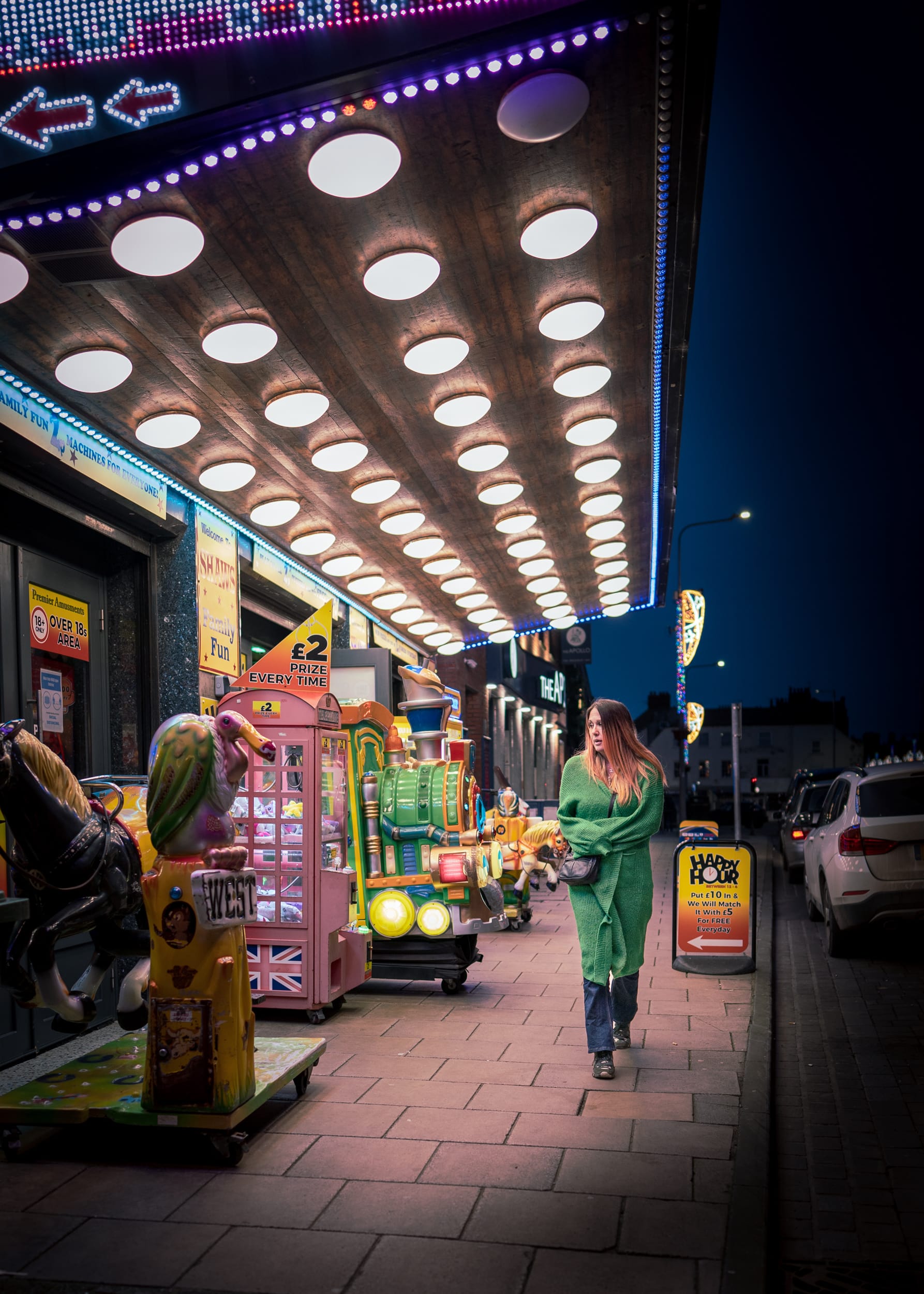
Now I look back on the photographs I’ve taken here over the years, I can see something else of me reflecting in some of the pictures, maybe a mood that on a subconscious level is about feeling lonely and isolated. It feels strange writing that down, although I’m not embarrassed to say it. I’m not burdened with those feelings everyday, and I think they’re just part of the human condition, but I do feel it a bit and perhaps it’s what I’m drawn to a lot in other people. I probably look for it because I feel it. Having said all this, I do also find a lot of humour in the pictures I take, and I take great pleasure in the warmth of the everyday. I hope that outweighs the gloom.
I sometimes get a better picture of someone if I shoot them in an unguarded moment and then talk to them. Of course, there’s an ethical issue, but no one has ever minded yet. The problem with asking people – although I do if I’m taking a portrait – is that invariably people change and put a camera face on for you. That’s why talking to them is important: if someone’s chatting to you, the picture will be more like the real them. You tread a very fine line photographing people you don’t know, because they’re not in control of the picture. Sometimes I’ve stopped myself taking a picture because I think a photo would just look mean and mocking. You can enjoy human nature being a bit ridiculous, without setting people up to make fun of them.
I love taking pictures of children because they’re much less guarded. Older men like being chatted to, and young men think I’m like their mother – it’s all personas, I’ve come to realise – but I enjoy photographing and talking to everyone now. I really love the process – the whole process: from taking the picture to seeing what I’ve got, to making something out of it that other people enjoy looking at. I do take it seriously, and I’d like to get really good at it.
I’m still learning, but ultimately I want my pictures to be beautiful- ordinary, so that everyone looking at them feels a connection with something they see in them, but with a visual aesthetic that people can enjoy at the same time.
Last year, I was lucky enough to meet Ella Murtha, daughter of the photographer Tish Murtha. She told me to keep connecting with people. She said just connect, connect, connect. I can see now that that’s really important, and I think I’m learning to be quite good at it.
All donations go towards supporting the Bee’s mission to nurture, publish promote and pay for the best new working-class writing.


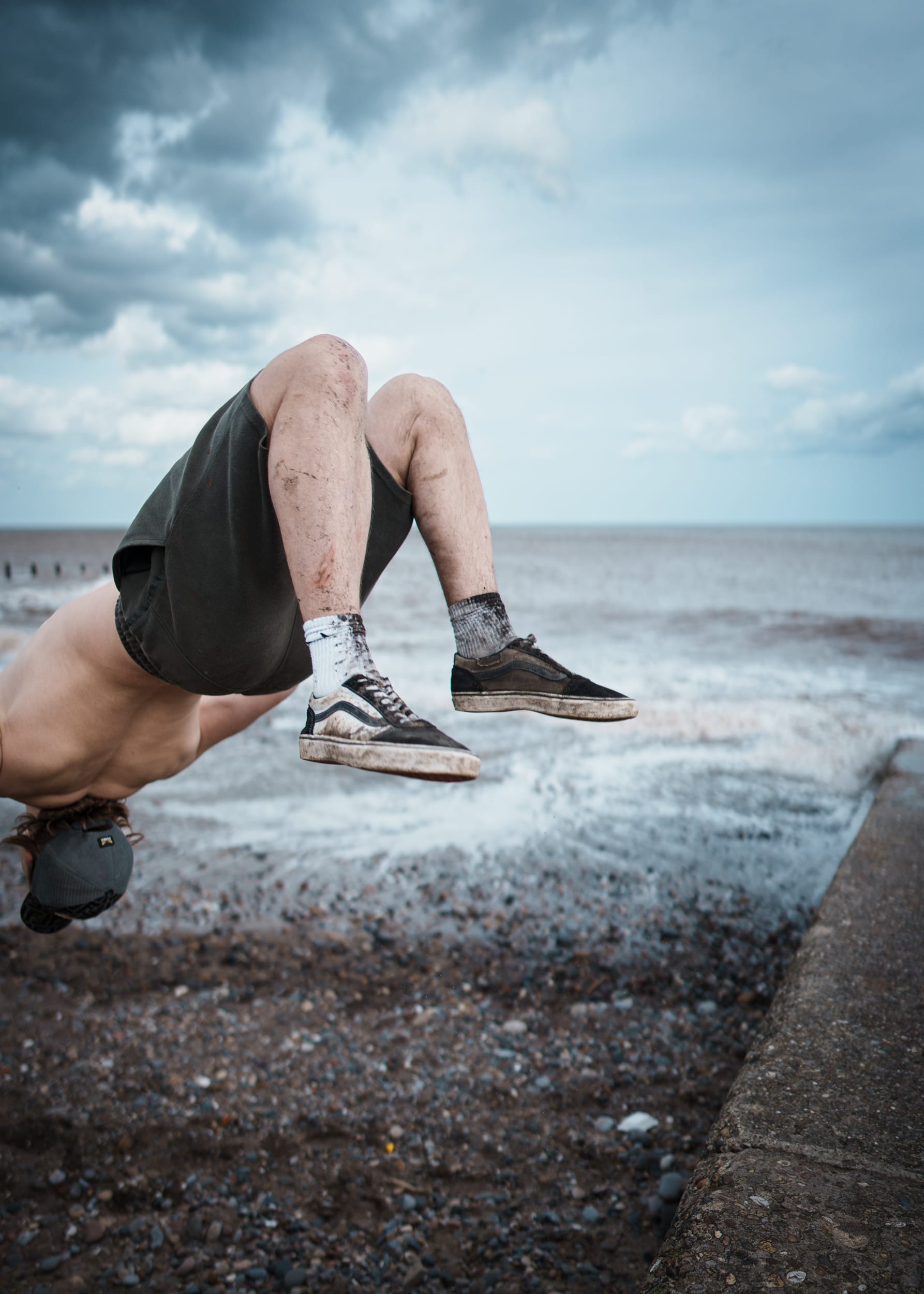
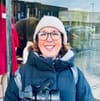
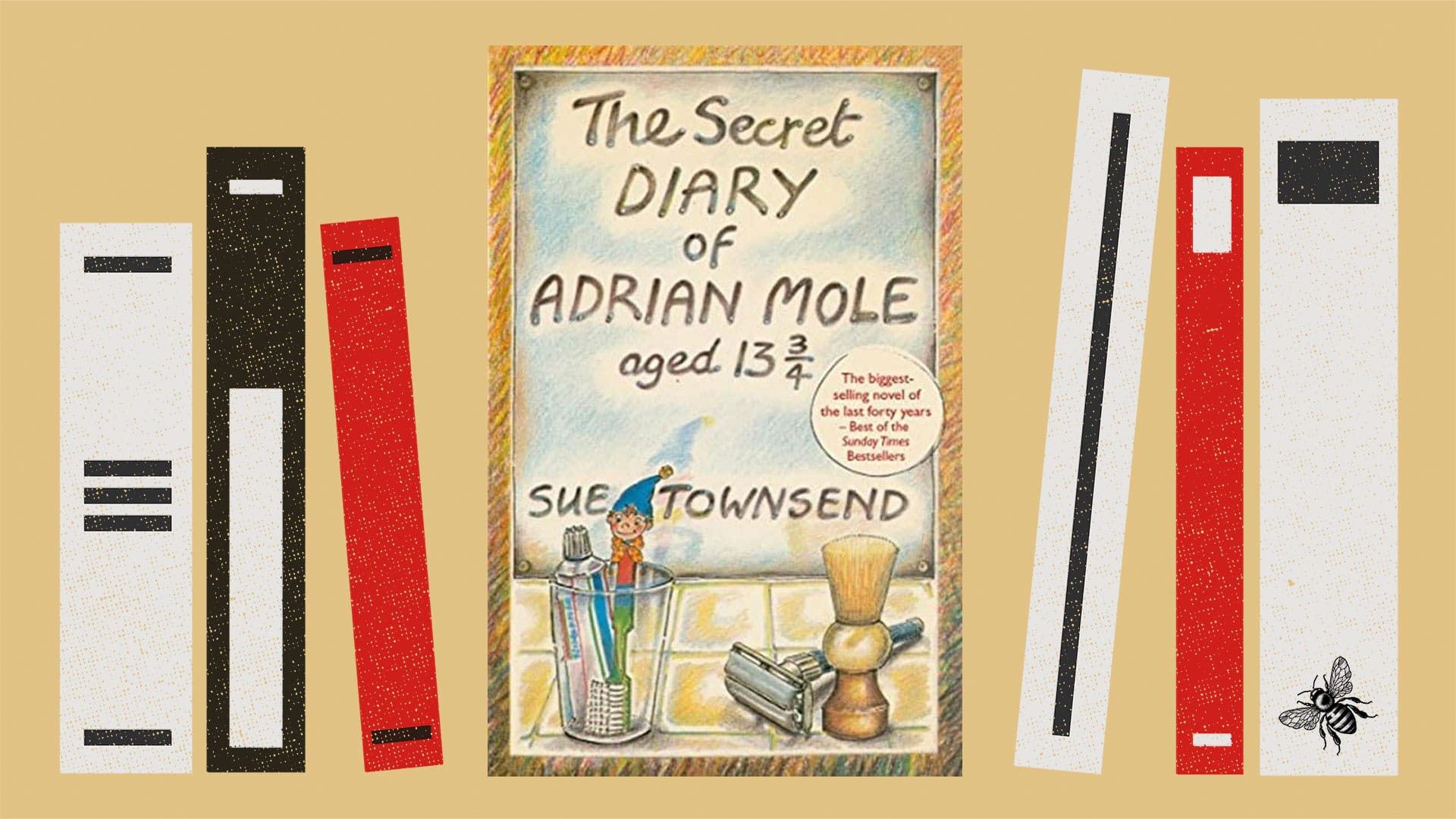
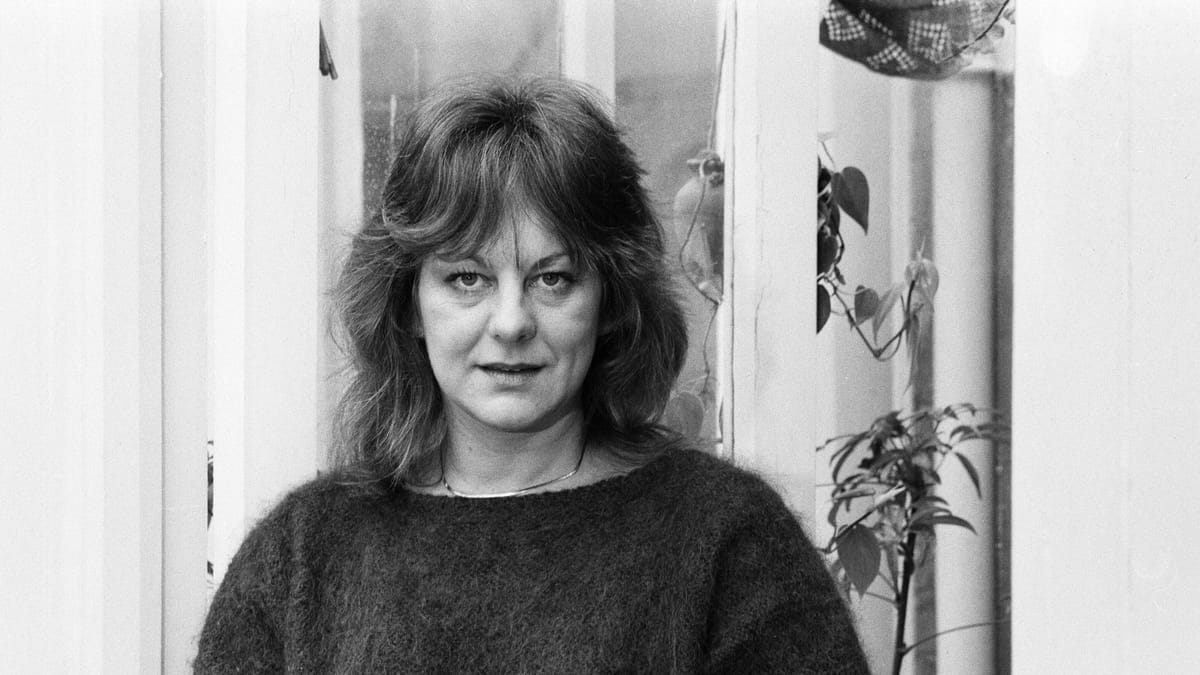
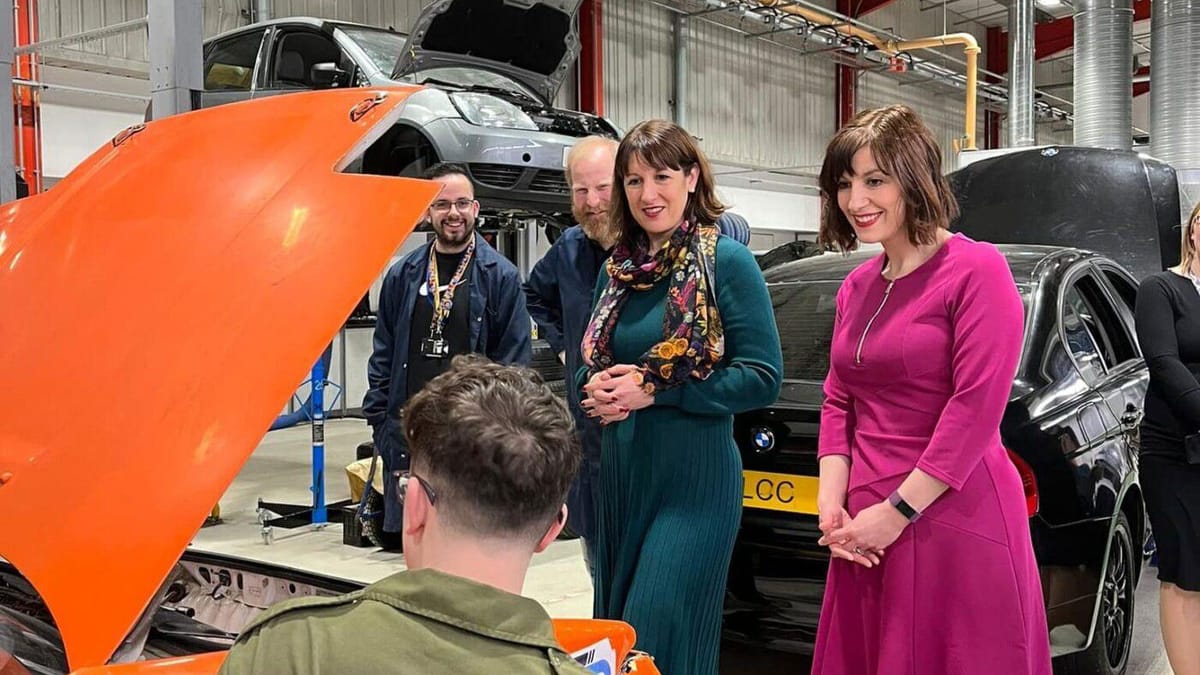


Comments